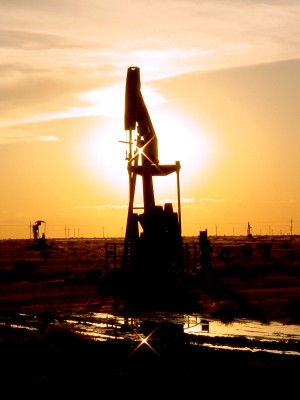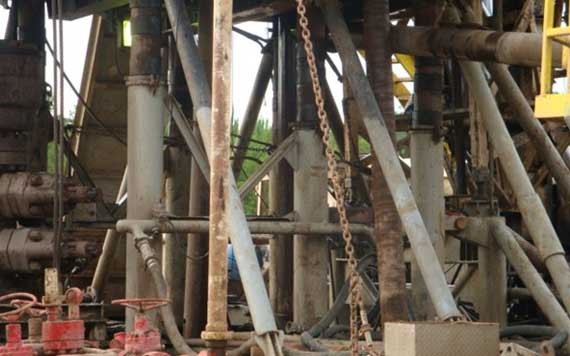Understanding Oil Industry Terminology
Post on: 2 Апрель, 2015 No Comment

The oil and gas industry is made up of many players, each of which has a specific job that spans the spectrum — from the discovery of the fossil fuels to the delivery to the end user. Along the way there are many industries that make this progression possible. The exploration and production (E&P) companies focus on the search, discovery and production of the commodity. The drillers pull the oil or gas out of the ground. The refiners take oil and crack or change it into usable forms. (Learn more in Unearth Profits In Oil Exploration And Production .)
The Terminology
These sub-industries are only a few of the moving parts that make up the oil and gas industry. As with many industries, oil and gas has a language of its own that investors need to understand before making investments.
BBL: Barrel of oil, a volume of 42 U.S. gallons (0.16 m 3 ).
CF: Cubic feet, a unit measurement for large volumes of natural gas.
BTU: British thermal unit, a unit of energy. It can be used to determine the quality of the resource when burned.
BOE : Barrel of oil equivalent is a unit of energy based on burning one barrel (42 U.S. gallons) of crude oil. The BOE is used by oil and gas companies in their financial statements as a way of combining all reserves and production into a single measure. (Find out how this commodity’s fluctuating price affects more than just how much you pay at the pump, read How Does Crude Oil Affect Gas Prices? )
BOEPD (BOE/D): Barrels of oil equivalent per day. One barrel of oil is generally deemed to have the same amount of energy content as 6,000 cubic feet of natural gas.
BBL/D : Barrels per day; a term used to measure daily production and consumption and can also be quoted as bpd, bd, b/d.
TOE: Ton of oil equivalent; a metric measurement equivalent to approximately 6.841 BBOE.
Unit measures
Each of the preceding terms can be attached to a unit of measurement. For example, 16 MMBOE would mean 16 million barrels of equivalent.
M = one thousand
MM = one million
B = one billion
T = one trillion
The drillers are made up of two main components: land drillers and offshore drillers. Although the basic duties are the same (to drill for oil or gas), these components differ on where they drill and the type of rigs and equipment needed. When discussing land drillers in the U.S. companies generally focus on drilling either gas or oil. Much of that land is known as unconventional shales, meaning the ability to reach the reserves may require rigs that have higher horsepower (greater than 10,000 feet drilling capability) and the ability to drill directionally to maximize the production of the wells, as much of the vertical, easily reached fossil fuels have already been drilled.
Therefore those companies with the most technologically advanced rigs will be the ones that capture the most market share. According to UBS, the companies with the modern fleet are earning higher day rates, margins and are in greater demand because of better technology. However, all of these measures are very sensitive to the economy, particularly the price of gas or oil. (Feeling overwhelmed by rising oil prices? We offer some tips that will save you money Getting A Grip On The Cost Of Gas and What Determines Gas Prices? )

Changing of the Rigs
Historically, rig count is modestly correlated with the spot price of natural gas and oil as measured by the Henry Hub Natural Gas Index and the WTI crude oil index. However, over the past 10 years, as E&P companies have needed to drill more and more wells to maintain flat production rates, the number of rigs demanded has shown a prolonged and steady increase, despite the volatility of commodity prices. However, in the short run, companies often experience mini production cycles when E&P companies adjust capital budgets with the fluctuations in commodity prices.
While the rig count has shown a steady positive progression, the day rates — the amount of money the driller gets paid per day — typically see the most dramatic fluctuations due to the spot price of the commodities. This results in volatility in margins and drillers’ willingness to improve those margins and maintain high utilization rates by decreasing new builds and stacking existing rigs. This is a very common cycle with the land drilling industry in the U.S. and historically its effect is reflected in stock price fluctuations. (Before jumping into this hot sector, learn how these companies make their money in Oil And Gas Industry Primer and Become An Oil And Gas Futures Detective .)
Investing Principles — Key Ratios to Watch
When investing in the land drillers, there are numerous ratios and metrics to watch. Many investors like to listen to the E&P companies’ comments about capital budgets and use those details as proxies to determine the current and future part of the cycle the drillers are trading. In addition, when determining a valuation on these companies, most analysts agree that understanding the enterprise value to rig (EV/rig) multiple is significant.
However this ratio is not always reliable in that, as mentioned earlier, differences in technology are very important to the market share capture and can significantly affect this ratio. Therefore, in addition to EV/rig, analyzing the EV/EBITDA margin is key.
Other Factors to Consider
Other important metrics to keep track of are the average utilization rates of the rigs, the quality of the rigs (horsepower and technological superiority), the average day rates, including how many are contract based vs. non-contract based, and the rig count for the industry overall. Historically, utilization and day rates are positively correlated, as high demand results in higher rates and utilization. The land drilling market is a competitive one, but in general, it acts rationally. Therefore, by comparing these ratios and metrics across the competitive landscape and determining if you feel comfortable with the state of the industry cycle, an investor should be able to determine which companies are worth investing in today and for the future. (How a company accounts for its expenses affects how its net income and cash flow numbers are reported, see Accounting For Differences In Oil And Gas Accounting and A Guide To Investing In Oil Markets .)
Conclusion
The land drillers are just one part of the oil and gas industry spectrum, and are dependent upon the E&P companies’ budgetary spending and require continual technological research and development to produce the most up-to-date rig that has the best capabilities to maintain or capture market share in this highly competitive industry. Utilization and day rates, which in the long run are an outgrowth of technological superiority, are the key metrics that companies need to keep at high levels to sustain strong margins, particularly in this very cyclical industry. Key ratios of EV/rig and EV/EBITDA should provide a strong comparable basis to determine the attractiveness of a company. Finally determining the investor’s level of comfort with the cyclical and volatile nature of stock price movements is important to investing in the land drillers.














